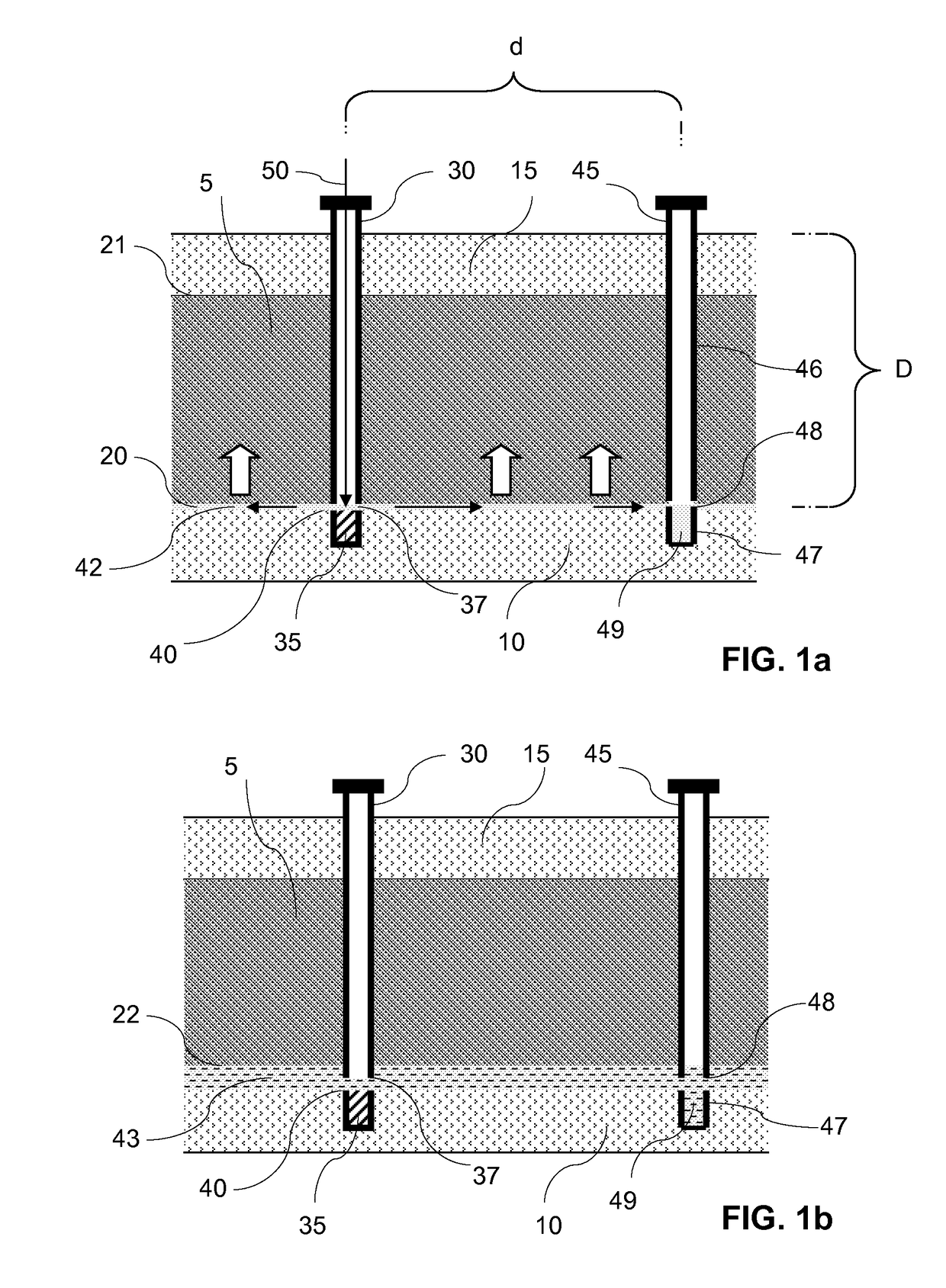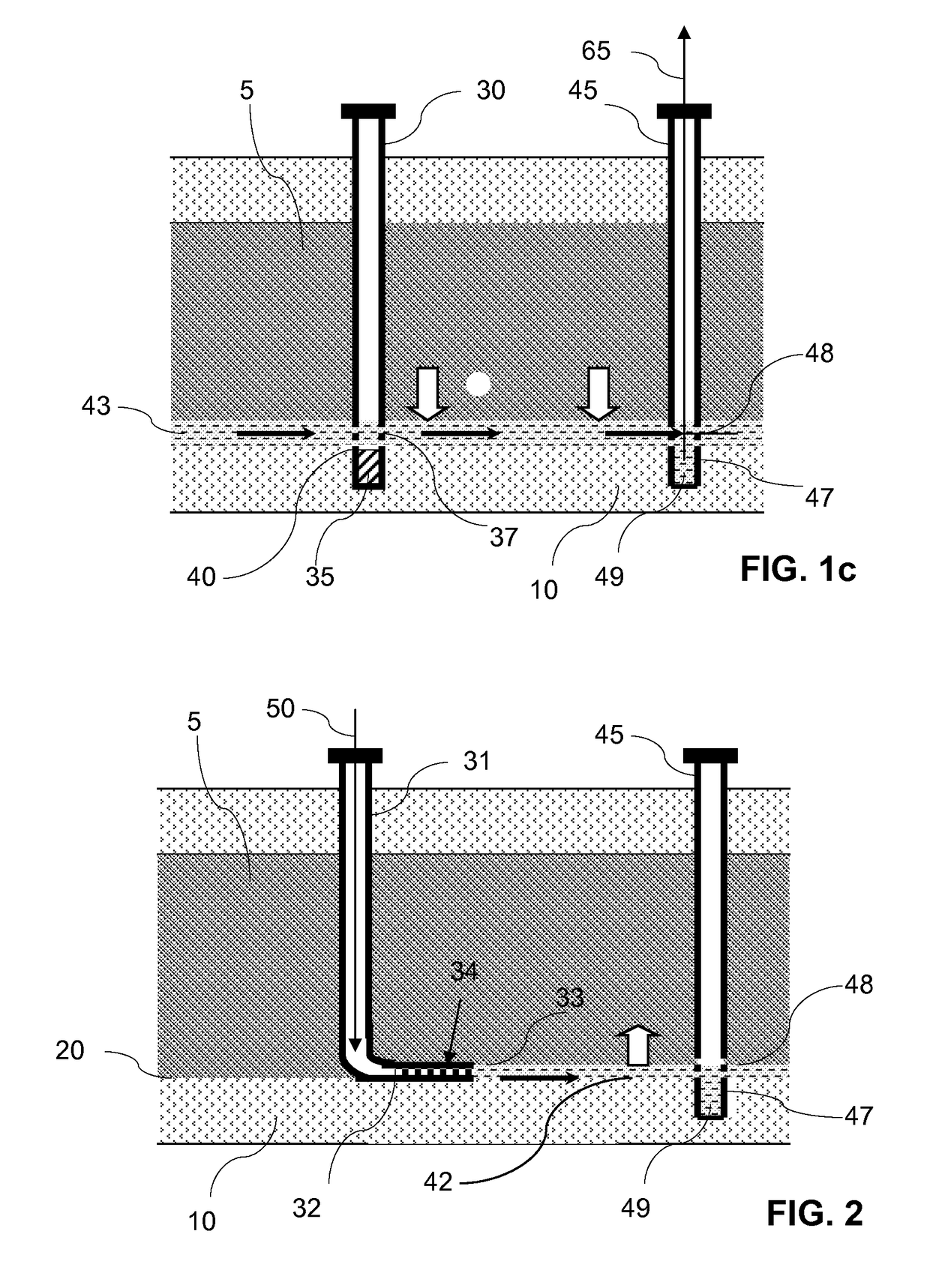Batch solution mining using lithological displacement of an evaporite mineral stratum and mineral dissolution with stationary solvent
a technology of lithological displacement and mineral dissolution, which is applied in the direction of earthwork drilling, fluid removal, and wellbore/well accessories, etc., can solve the problems of high cost of mechanical mining methods for trona, 40 percent of soda ash production cost, and the difficulty of recovering trona by these methods, and achieves cost-effective effects
- Summary
- Abstract
- Description
- Claims
- Application Information
AI Technical Summary
Benefits of technology
Problems solved by technology
Method used
Image
Examples
example
[0351]For the initiation phase in which the dissolution of trona takes place with water in a pancake-shaped gap with a 600-ft (ca. 183-m) radius and a 0.4-inch (ca. 1-cm) width, with a dissolution rate of 3 g / m2 / s, a time period of about 10 minutes would be necessary to obtain a brine containing 15% sodium carbonate from this gap. The calculation results are shown in TABLE 2.
[0352]
TABLE 2Gap surface area125664m2Gap thickness0.01mDissolution rate3g / m2 / sDissolution rate in the gap0.376991ton / sDensity of 15% Na2CO3 brine1.15ton / m3Weight of the brine in the gap1445tonDissolved trona in the gap217tonTime to reach 15% saturation9.6min
PUM
 Login to View More
Login to View More Abstract
Description
Claims
Application Information
 Login to View More
Login to View More - R&D
- Intellectual Property
- Life Sciences
- Materials
- Tech Scout
- Unparalleled Data Quality
- Higher Quality Content
- 60% Fewer Hallucinations
Browse by: Latest US Patents, China's latest patents, Technical Efficacy Thesaurus, Application Domain, Technology Topic, Popular Technical Reports.
© 2025 PatSnap. All rights reserved.Legal|Privacy policy|Modern Slavery Act Transparency Statement|Sitemap|About US| Contact US: help@patsnap.com



